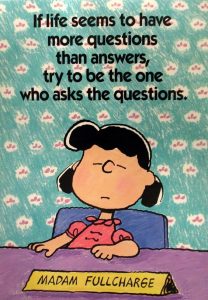All good things come to an end, and so does this course. During the course we have had excellent lecturers and interesting perspectives on social justice and diversities. Last monday we heard interesting presentations by the groups and learned that social justice can’t be separated from context but the issues and challenges extend to all parts of life.
About two weeks ago, the 20th of February was the World Day of Social Justice. United Nations seeks to remind its member countries that social justice is part of the core development objectives of the Organization’s message. United Nations defines the meaning of social justice as follows: “people’s opportunity to achieve their full potential in society”. According to the UN, Social justice is “an underlying principle, which guarantees a peaceful and successful coexistence in the world.” Like the previous UN Secretary-General Ban Ki-moon has stated, social justice is more than a moral obligation – social justice is the foundation for national stability and global prosperity. Wise words that hardly anyone can deny.
But what social justice really means in our everyday life and how do we define it?
From the perspective that we gained through the course, we could state that social justice is both; a goal and a process. The goal of social justice is an equitable participation of people from all social identity groups in a society that is mutually shaped to meet their needs. The process for achieving the goal of social justice should also be democratic and participatory – something that everyone in the society understands and where anyone can affect on by his or her own acts. For achieving social justice, the process should be respectful of human diversity and group differences. That is something we shouldn’t forget in any field; in political discussion, in school, in work or anywhere.
We have been lucky to hear different perspectives on social justice and diversities on this course. We have been taught to not only understand the definition of social justice, but also to recognize what it is and how we can estimate our society and environment through it. Social justice isn’t only something that we can evaluate in they way of people are treated, it is also a place or an environment that supports and encourages open-mindedness, respect and both physical and mental safety. With all these topics that were discussed in course and through the presentations, we got perspectives and tools that drove us forward in understanding of social justice. Still, social justice isn’t only constructed by explicit determinations and norms, but also by our tacit knowledge and understanding. Our tacit knowledge is bound by our experiences, which is why our understanding of social justice is always individual. In our everyday life, we should keep this on our mind and learn to understand the other perspectives – even though those are not the same as ours.
However, during this course, and some others before on the same subject, one question has occasionally risen in mind. How is it possible to achieve social justice? We have come a long way and many many things have changed over the years, making the world a better and fairer place to live, but still there is so much more to do. For example if you think about economics. Or business world in general, or making new technology. Many countries have the kind of economy, or companies, which base their business on actions that exploit nature or deprive people’s rights. When making decisions about future, how much people in those fields think about that social justice needs to take place? Are they ready to change, or even stop, their operations so that things would work the way that everything is equitable for as many people as possible. Then another question related to money as well, is that do we have enough money to make all the changes needed? All the actions, different programs, researches and so on require a lot of finance to make those happen. There can be a risk that when giving finance to something that improves situation in one place, it takes money away from another place. So can we afford social justice? Could justice take over money? Some how that feels more like a dream. Of course hopefully a dream that comes true. Maybe with a right kind of education and increasing awareness on things, some day it will happen.
Actually, writing this last blogpost of the series felt quite challenging. That is because the very last part of a university course is often dedicated to summarizing and drawing together the learnings and conclusions of the past months. Listening to the groups’ presentations during our last lecture underlined the fact that there is a plethora of cases or situations where social justice is lacking (and we naturally only had resources to scratch the surface). It seems difficult to summarize these in any meaningful way that would respect the context boundness of the cases that were brought up. We can only say that the course has functioned as an eye-opener to the many dimensions of social justice and even more the global quest for it. Unlike many other courses we have participated in as part of our degrees, this course probably has left us with more questions than answers. As there are no right answers to the challenges to the social justice issues, this is probably the best outcome that we could have asked for. Hopefully we all move on chasing our education career dreams with more awareness for the challenges with inequality that we will face (and hopefully tackle as well!) on our way.

Ryhmä B.
Sources:
Finnish UN Association
http://www.ykliitto.fi/yk70v/yk-paivat/sosiaalisen-oikeudenmukaisuuden-paiva
Picture: